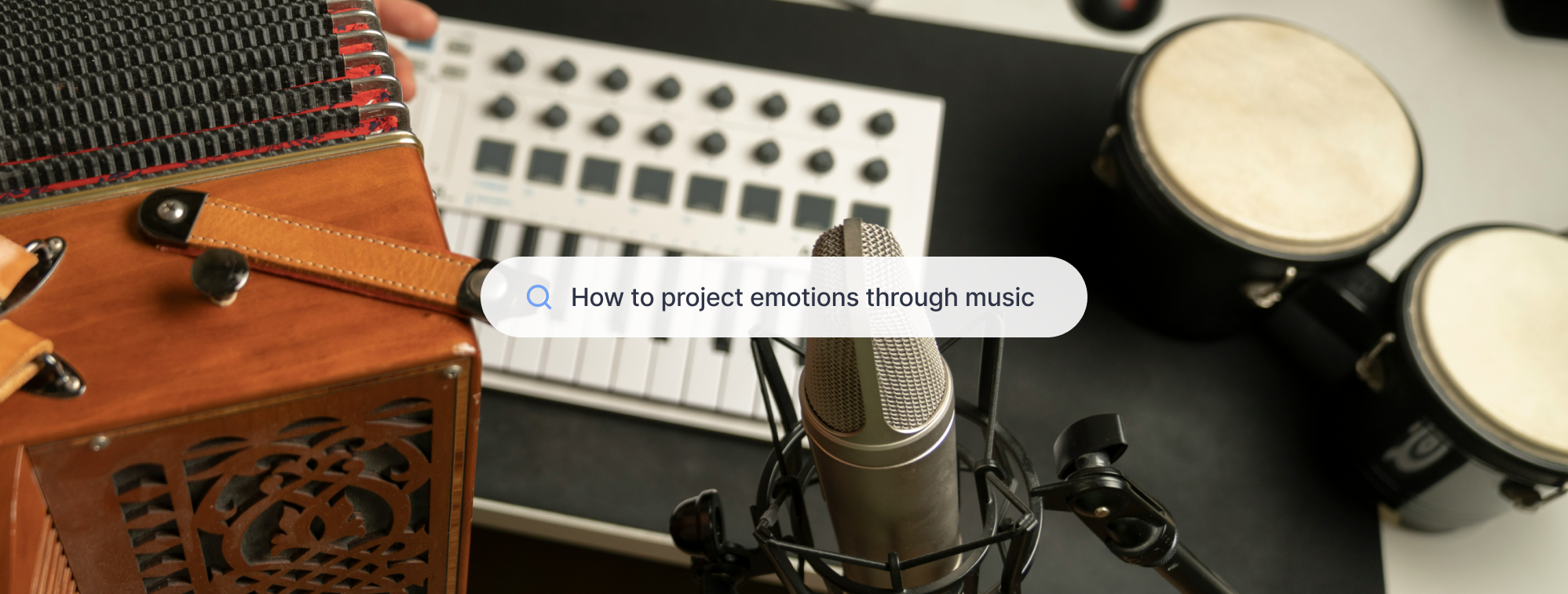Most people connect with a song based on how it makes them feel. Chord progressions—sequences of chords played in a specific order—are key to shaping these emotions, forming the foundation of a song’s impact. Choosing the right chords is crucial for crafting music that resonates. While music theory can explain why certain progressions evoke specific emotions, you don’t need to be an expert to start using them. Trust your instincts: focus on how each progression feels to you. Today, we’ll explore seven chord progressions that inspire different moods, with easy theory tips and guidance for composing in music notation software.

Key Concepts in Emotional Chord Progressions
Before diving in, let's cover two foundational music theory concepts that shape how chord progressions create emotion:
I. Tonal Center (Key)
In music, the tonal center is the “home base” of a piece, where the music feels stable and complete. This center, or key, is usually established by the first note and chord and gives the music a sense of direction. For example, if a song is in the key of C major, the note and chord of C feel like the resting point or destination.
Each key has its own mood: major keys often sound bright and happy, while minor keys bring a darker, more emotional tone. Understanding the tonal center helps you decide which notes and chords to use to maintain the piece's mood and structure.

If you want to read more about this, we have the right article for you:

II. Chord Qualities (Major, Minor, Diminished, Augmented):
Chord quality refers to the specific character or “color” of a chord, which depends on the intervals between its notes. These qualities—major, minor, diminished, and augmented—give each chord a distinct sound and emotional effect.
- Major chords feel stable and uplifting, thanks to their large intervals.
- Minor chords have a darker, more introspective tone, with a lowered third.
- Diminished chords, built with minor thirds, sound tense or unresolved.
- Augmented chords create suspense with a raised fifth, leading toward resolution.
Each quality plays a key role in shaping the overall emotion within a progression.
💡 If you don’t remember how to build different chord types, check the downloadable chart below.
Chord progressions and their corresponding moods
1. Happy and Uplifting Progressions
Progression: I – V – vi – IV (e.g., C – G – Am – F)
This progression creates a cheerful, forward-driving sense of optimism. It’s commonly found in pop music and is effective for conveying light-hearted, upbeat energy.
Theory Insight: Alternating between major and minor chords provides an engaging balance. The I, V, and IV chords establish brightness, while the vi chord adds slight emotional depth, making it relatable without being overly complex.
Composition tip: Try inputting this progression and adjusting the tempo and dynamics to create different levels of cheerfulness.

2. Dark and Brooding Progressions
Progression: i – VI – i – VII (e.g., Am – F – Am – G)
Perfect for a moody atmosphere, this minor-heavy progression remains unresolved, lending a haunting, introspective feel. It’s ideal for rock, alternative, or cinematic pieces that need an edge of mystery.
Theory Insight: The absence of a final resolution to a tonic major chord keeps the listener in suspense. This progression also mixes minor and major chords, intensifying the mood.
Composition tip: Layer in dynamics and tempo changes with this progression to heighten its dark tone, adjusting note length and intensity to amplify suspense.

3. Nostalgic and Sentimental Progressions
Progression: I – IV – ii – V (e.g., C – F – Dm – G)
This sequence blends warmth with a hint of melancholy, making it perfect for pieces meant to evoke memories.
Theory Insight: The I and IV chords bring stability, while the ii chord introduces a reflective touch. The final V chord adds anticipation, keeping the progression open.
Composition tip: Experiment with tempo and phrasing to create a more personal, reflective tone. Adding accelerando or ritardando can make the piece sound even more heartfelt.

4. Motivational and Triumphant Progressions
Progression: ii – V – I (e.g., Dm – G – C)
This progression, common in jazz and classical music, suggests completion and victory. It’s uplifting without being overly bright, making it perfect for motivational pieces.
Theory Insight: Moving through the circle of fifths, this progression builds to a satisfying resolution, grounding the music with a feeling of achievement.

Composition tip: Emphasize dynamics and tempos that make each chord shift pronounced, giving a sense of forward motion and triumph.
5. Wistful and Longing Progressions
Progression: i – III – VII – iv (e.g., Am – C – G – Dm)
Alternating between major and minor chords creates a bittersweet, yearning effect, perfect for ballads or introspective pieces.
Theory Insight: The major III and VII chords add complexity, moving the music beyond straightforward sadness into a more layered emotion.
Composition tip: Adjust tempos and subtle dissonances to heighten the feeling of longing. Experimenting with dynamics can help make the piece feel as though it’s “sighing” with each phrase.
6. Calm and Meditative Progressions
Progression: I – IV – V – IV (e.g., C – F – G – F)
Using only major chords keeps this progression neutral and soothing, making it ideal for meditation or ambient music.
Theory Insight: The return to the IV chord rather than resolving on the tonic (I) creates a sense of continuity and flow without strong closure.
Composition tip: Adjust tempo and dynamics to create a gentle, flowing effect. Slower tempos and soft dynamics work best to keep this progression subtle and calming.

7. Suspenseful and Tense Progressions
Progression: i – VI – iv – V (e.g., Am – F – Dm – E)
This sequence sustains tension by combining minor and major chords without resolving fully, which is ideal for creating suspense or drama.
Theory Insight: Minor i and iv chords establish a dark tone, while the V chord keeps listeners on edge, leaving the progression open for further development.
Composition tip: Adjust note length and rhythm, using staccato notes and syncopation to heighten the suspenseful feel. This progression pairs well with dynamic contrasts and subtle rhythmic shifts.


That’s all for now! Chord progressions are powerful tools for channeling emotions in your music, from joy to suspense. With music notation software, you can experiment with tempo, dynamics, and layering to unlock new emotional dimensions. Don’t forget to use Flat’s playback feature to listen as you practice—this will reinforce today’s theory. Plus, Flat’s new playback is now available on mobile, so you can work on your compositions anywhere!

See you next time!

